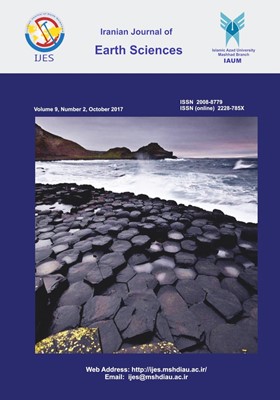Structural analyses of fault planes using fault slickenlines and calcite e-twins data from the Dasht-e-Arjan graben, SW Iran
الموضوعات :Zahra Kamali 1 , Jafar Rahnamarad 2 , Khalil Sarkarinejhad 3
1 - Department of Geology, College of Sciences, University of Shiraz, Shiraz, Iran
2 - Department of Geology, Zahedan Branch, Islamic Azad University, Zahedan, Iran
3 - Department of Geology, College of Sciences, University of Shiraz, Shiraz, Iran
الکلمات المفتاحية: polarizing, Inversion method, paleostress, striation, tensional regime,
ملخص المقالة :
Dasht-e-Arjan is a northeast trending graben located 65 km west of Shiraz. It was formed along active segments of the Korrehbas fault, perpendicularly to the Shahnesh in and Salamati anticlines. Oriented sampling from bordering fault planes and striations was carried out to evaluate the relative amounts of paleostress/strain needed to form the graben. Measurements of e-twins and c-axis of calcite properties on XY and XZ planes, using five universal stages in a polarizing optical microscope, showed the presence of type I and II calcites. Because the calcite e-twins and fault striations register the last deformation phase, measurements of calcite e-twins show the plane strain K=1 in the last graben deformation phase. The inversion method, applied for the analysis of fault striation data, showed a plane stress ellipse (φ=1), (σ1=σ2), and a plane strain ellipse (r0=1). The mean orientation of the sub-vertical maximum principal-stress (σ1) was N23°.70°E, and the mean orientation of minimum principal-stress (σ3) was S58°.26°E. Based on the analysis of twinned calcite crystals, the mean direction of the determined compression and tension were S55°E ± 9.−32° and N35°E±11.−72°, respectively. Using multiple inversion methods, and based on the investigation of fault striation data, we can expect two stress phases. The paleostress phase, acting as a tensional regime, caused the formation of SW trending faults, while the recent phase caused the formation of new fractures within the study area. Based on field and laboratory analyses, it is suggested that a tension tectonic regime is dominant in the studied graben.


